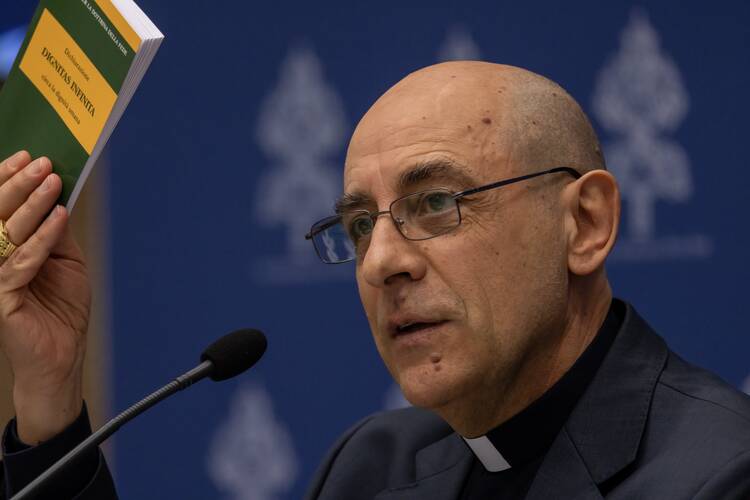Jan Bergstra & Laurens Buijs
Amsterdam Gender Theory Research Team
Published in April 2024 Dignitas Infinita , a statement from the Vatican on various aspects of human dignity. Now we know in advance that such a document is conservative in nature, yet at #55 we read this:
“The Church wishes, first of all, ‘to reaffirm that every person, regardless of sexual orientation, ought to be respected in his or her dignity and treated with consideration, while ‘every sign of unjust discrimination’ is to be carefully avoided, particularly any form of aggression and violence. For this reason, it should be denounced as contrary to human dignity the fact that, in some places, not a few people are imprisoned, tortured, and even deprived of the good of life solely because of their sexual orientation.“
Admittedly, this passage is under the heading of gender, and thus this passage is still somewhat incorrectly positioned, but we should still be mindful of the steps taken here. This is what Wikipedia says about the Vatican’s position in the recent past (50 years back):
“In the late 20th century, the Church has responded to gay rights movements by reiterating its condemnation of homosexuality while acknowledging the existence of gay people. In January 1976, the Congregation of the Doctrine of the Faith under Pope Paul VI published Persona Humana, which codified the teaching against all extra-marital sex, including gay sex. The document stated that acceptance of homosexual activity runs counter to the church’s teaching and morality. It drew a distinction between people who were homosexual because of “a false education,” “a bad example” or other causes it described as “not incurable,” and a “pathological” condition which was “incurable.” However, it criticized those who argued that innate homosexuality justified same-sex sexual activity within loving relationships, and stated that the Bible condemned homosexual activity as depraved, “intrinsically disordered,” never to be approved, and a consequence of rejecting God.”
With this, the Roman Catholic Church is nevertheless taking serious steps regarding the acceptance of sexual orientation diversity. And that is not slow viewed from a historical perspective. But at the same time, Dignitas Infinita is very conservative on a number of other issues, including what is called “gender theory.” In doing so, the possibility that gender theory might be scientifically tenable is explicitly kept open, that discussion is said to be still active in expert circles.
Read more about the Vatican’s statements on gender theory:
Vatican contradicts itself on “gender theory”
It is unfortunate that the Vatican uses gender theory where co-essentialist gender theory is meant (see also AGTRT-BF77). Surely the Vatican can know that within a scientific theory there are often different points of view that are opposed to each other? To identify that theory as a whole with an extreme position within it is theoretically incorrect, and the Vatican itself knows that very well. In a recent interview, Cardinal Eijk was crystal clear on that point: it was the extreme positions within gender theory that he opposed.
Earlier from the Vatican, gender ideology was used for “co-essentialist gender theory,” and there was something to be said for that, but it is clearly too short-sighted to turn it into gender theory, as if the Vatican itself would not propagate a gender theory of its own.
We note further that about sex-change (which we then read as gender transition) it is said that:
“It follows that any sex-change intervention, as a rule, risks threatening the unique dignity the person has received from the moment of conception. This is not to exclude the possibility that a person with genital abnormalities that are already evident at birth or that develop later may choose to receive the assistance of healthcare professionals to resolve these abnormalities. However, in this case, such a medical procedure would not constitute a sex change in the sense intended here.“
With some good will, one can read here that under some, albeit exceptional, circumstances, gender transition would be acceptable (but not “as a rule,” whatever that means here).
With some good will, we can thus see Dignitas Infinita as a step forward both for the acceptance of gender theory and for the acceptance of sexual diversity. The acceptance of gender theory is still very minimal and the justification for the rejection of sex-change does not reflect a modern understanding of “human dignity.”
Read more about gender within the Roman Catholic Church:
The Roman Catholic Church has more diversity of views on gender than one might think
